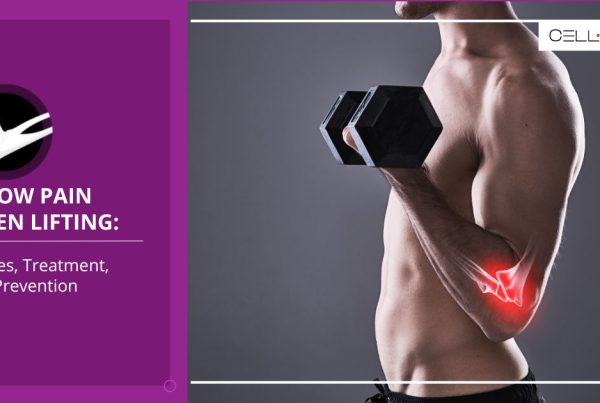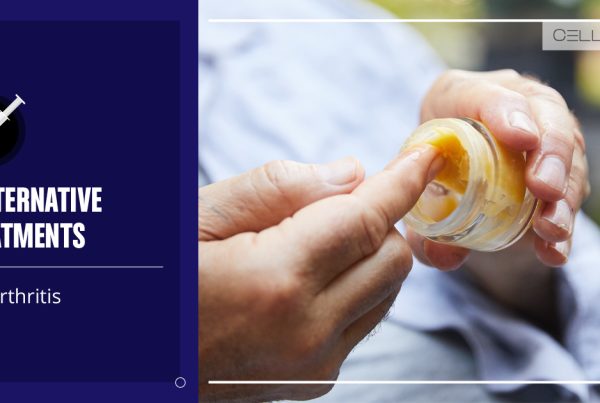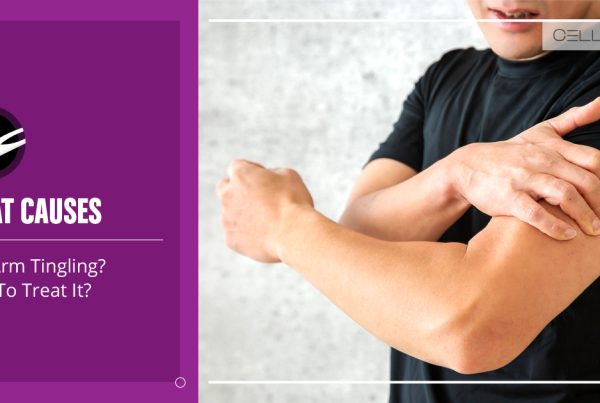Published on: December 11, 2024 | Updated on: January 18, 2025
Elbow injuries are common in athletes because of repetitive strain on the tendons, ligaments, and muscles surrounding their elbow joints. This strain often leads to severe inflammation, decreased range of motion, stiffness, weakened grip, and persistent pain.
The injury can range from mild inflammation that can be relieved by rest, to severe ligament tears that require surgical intervention.
Here, we will talk about common thrower’s injuries, and how you can safely return to activity by effectively treating the associated pain.
Understanding Throwing Injuries and Elbow Pain
Overhead throwing motions, which are common in sports like baseball, javelin, and football, place immense stress on the elbow.
We know that the elbow is a hinge joint that connects your upper arm to your forearm and allows for flexion, extension, and rotation. When you are playing, the force generated by your arm repeatedly transfers through the elbow. Over time, this strains the ligaments, tendons, and muscles.
The constant high-intensity stress also causes microtrauma in the soft tissues of the elbow, which causes inflammation, wear, and, in more severe cases, ligament tears.
If left untreated, these injuries can progress, significantly impairing activity, and requiring long-term rehabilitation, and maybe even surgical correction.
Common Throwing Injuries of Elbow
Here are common elbow injuries caused by throwing:
Tennis Elbow
Tennis elbow is a common overuse injury that occurs due to stress on tendons attached to the lateral epicondyle of the elbow.
Research shows that it affects approximately 50% of tennis players and other athletes, at least once in their careers. In the general population too, tennis elbow has a high prevalence.
Symptoms include pain and tenderness on the outside of the elbow which worsens with activity and is typically relieved by rest.
Ulnar Collateral Ligament (UCL) Injuries
The ulnar collateral ligament or UCL stabilizes the elbow joint. Hence, tearing or repetitive stretching of the UCL results in pain on the inside of the elbow, loss of throwing velocity, and elbow instability.
UCL injuries are particularly common in adolescent athletes who engage in overhead sports, especially baseball pitchers. While mostly a couple of weeks of rest is enough for recovery, over 13% of cases need surgical fixes.
Olecranon Stress Fracture
The olecranon, or tip of the elbow, is prone to stress fractures in athletes.
When you play sports for a long time, the muscles eventually get tired, which impairs their ability to effectively absorb shock. The overload from sports hence causes a crack in the elbow joint. Other than overhead activity, falling on an outstretched arm also results in olecranon damage.
Typical symptoms include pain, tenderness, and inability to straighten the arm.
Valgus Extension Overload Syndrome (VEOS)
Valgus extension overload occurs when the elbow joint is subjected to excessive valgus force (force pushing inward towards the body) during throwing, leading to cartilage wear and bone spurs.
It manifests as pain at the back of the elbow during full extension and is common in overhead athletes.
Ulnar Neuritis
Ulnar neuritis, also known as cubital tunnel syndrome, results from inflammation or irritation of the ulnar nerve, which runs along the inner side of the elbow. Repetitive throwing can compress this nerve, leading to numbness, tingling, and weakness in the hand and fingers.
Posterior Elbow Impingement
In high-velocity sports, bones at the back of the elbow tend to repeatedly collide during extension, which pinches and irritates surrounding soft tissues. This results in posterior elbow impingement, which is characterized by inflammation, and cartilage damage that causes pain and movement restriction.
Affected individuals typically experience pain at the back of the elbow, especially when fully straightening the arm.
How to Treat Elbow Pain from Throwing?
Here’s how to go about treating elbow pain from throwing injuries:
Nonsurgical Treatment
Barring extreme cases, a nonsurgical conservative approach is always tried initially to treat elbow pain.
Rest
The first step in treatment is often resting the affected elbow. In most cases, avoiding throwing activities for a few weeks is sufficient to heal the joint.
However, it is important to know that while you may feel better in a few weeks, the tendon might take 6 months to a year to completely heal.
Physical Therapy
Physical therapy is a key component of elbow injury rehabilitation. Simple therapies like elbow bend, wrist turn, and foam ball squeeze are all used to reverse the damage.
The primary focus of the therapy is to aggressively strengthen the joint so the patient can regain function.
Anti-inflammatory Medications
Elbow injuries can cause persistent dull to sharp, stabbing pain. Anti-inflammatory medicines like ibuprofen or diclofenac are often prescribed along with rest /physical therapy to ease the pain.
PRP Injections
Platelet-rich plasma (PRP) injections are becoming an increasingly popular treatment for elbow injuries. It involves using the patient’s own blood platelets to accelerate tissue repair in the injured area.
1 to 3 sets of injections are administered, 4 to 6 weeks apart, with each session lasting less than 15 minutes.
The response to recovery varies. While some people notice improvement within 6 weeks, some also report no difference in pain, even months after treatment.
Surgical Treatment
When conservative measures fail to relieve persistent pain, your doctor will look into the following surgical fix:
Arthroscopy
Elbow arthroscopy is both diagnostic and therapeutic for elbow pain. It is a minimally invasive procedure used to remove bone spurs, loose cartilage, or inflamed tissue from elbow joints.
Physical therapy is often also included in the management plan for best results, and most patients generally recover within six to eight weeks.
UCL Reconstruction
UCL reconstruction or Tommy John Surgery is used to repair UCL ligament tears. The damaged UCL is replaced with a tendon from another part of the body, which allows the elbow to regain stability.
It has a high success rate, and 90% of patients return back to their pre-injury level of activity within two years.
Ulnar Nerve Transposition
In cases of ulnar neuritis, the ulnar nerve is moved from behind the elbow to a more secure position, preventing further irritation and pain.
How to Prevent Future Elbow Injuries?
Here’s how you can prevent elbow injuries from throwing:
- Proper Throwing Mechanics: Focus on the correct technique to minimize strain on the elbow.
- Strengthening Exercises: Regularly strengthen the muscles around the shoulder, forearm, and core to reduce the load on the elbow joint.
- Warm-Up and Stretching: Always perform warm-up exercises and stretches before engaging in throwing activities.
- Limit Throwing Volume: Avoid excessive throwing to reduce overuse injuries; implement rest days between throwing sessions.
- Use Appropriate Equipment: Ensure you are using properly fitted sports gear to prevent strain on the elbow.
Sources
Footnotes
- Camp CL, Tubbs TG, Fleisig GS, Dines JS, Altchek DW. Epidemiology of elbow injuries among baseball players. Sports Health. 2020;12(6):537-44.
- Jayanthi N, McCann T, O’Boyle J, Peabody L, Labella C, Dugas J. Tennis elbow: Survey among 839 tennis players with and without injury. Sports Med. 2013;43(9):787-95.
- Sanders TL, Maradit Kremers H, Bryan AJ, Ransom JE, Morrey BF, Steinmann SP. The epidemiology and health care burden of tennis elbow: A population-based study. Am J Sports Med. 2015;43(5):1066-71.
- Dugas JR, Cain EL, Andrews JR. UCL injuries in throwing athletes: Incidence and surgical outcomes. American Society for Surgery of the Hand 73rd Annual Meeting [Internet]. 2018.
- Glousman R. E. (1990). Ulnar nerve problems in the athlete’s elbow. Clinics in sports medicine, 9(2), 365–377.
- Dugas J. R. (2010). Valgus extension overload: diagnosis and treatment. Clinics in sports medicine, 29(4), 645–654. https://doi.org/10.1016/j.csm.2010.07.001
- Clark R. Rehabilitation of the thrower’s elbow [Internet]. 2024 [cited 2024 Sep 14].
- Ahluwalia S. Elbow pain: symptoms and treatment [Internet]. 2024 [cited 2024 Sep 14].
- Min K, Ryu T, Shim S, Kim B, Kwak D, Kim H, et al. The clinical and radiological outcomes of arthroscopic lateral collateral ligament complex repair for chronic lateral elbow instability. Clin Orthop Surg
- Erickson BJ, Gupta AK, Harris JD, Bush-Joseph CA, Bach BR, Abrams GD, et al. Rate of return to pitching and performance after Tommy John surgery in major league baseball pitchers. Am J Sports Med
- American Academy of Orthopaedic Surgeons. Elbow injuries in the throwing athlete
References
- What exactly is tennis elbow? Statistics and treatment options.BOSIC Accessed 09/17/2024.
- Olecranon stress fractures: Causes, symptoms, and treatment Fortius Clinic Accessed 09/17/2024.
- Tennis elbow treatments Stanford Health Care Accessed 09/17/2024.
- PRP therapy for elbow conditions Sports Surgery Chicago Accessed 09/17/2024.
- Elbow arthroscopy: diagnostic and treatment procedure Cleveland Clinic Accessed 09/17/2024.
- Elbow surgery: aftercare instructions Alberta Health Services Accessed 09/17/2024.
- Tommy John surgery (ulnar collateral ligament reconstruction Johns Hopkins Medicine Accessed 09/17/2024.
- Ulnar nerve transposition at the elbow Neurosurgical Associates, P.C Accessed 09/17/2024.
CELLAXYS does not offer Stem Cell Therapy as a cure for any medical condition. No statements or treatments presented by Cellaxys have been evaluated or approved by the Food and Drug Administration (FDA). This site contains no medical advice. All statements and opinions are provided for educational and informational purposes only.
Dr Pejman Bady
Author
Dr. Pejman Bady began his career over 20 years ago in Family/Emergency Medicine, working in fast-paced emergency departments in Nevada and Kansas. He has served the people of Las Vegas as a physician for over two decades. Throughout this time, he has been met with much acclaim and is now the head of Emergency Medical Services in Nye County, Nevada. More about the doctor on this page.
Dr Pouya Mohajer
Contributor
Pouya Mohajer, M.D. is the Director of Spine and Interventional Medicine for CELLAXYS: Age, Regenerative, and Interventional Medicine Centers. He has over 20 years of experience in pain management, perioperative medicine, and anesthesiology. Dr. Mohajer founded and is the Medical Director of Southern Nevada Pain Specialists and PRIMMED Clinics. He has dedicated his career to surgical innovation and scientific advancement. More about the doctor on this page.









